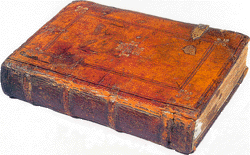 From Murray's Redemption: Accomplished and Applied:
From Murray's Redemption: Accomplished and Applied:There is only one source from which we can derive a proper conception of Christ's atoning work. That source is the Bible. There is only one norm by which our interpretations and formulations are to be tested. That norm is the Bible. The temptation ever lurks near us to prove unfaithful to this one and only criterion. No temptation is more subtle and plausible than the tendency to construe the atonement in terms of our human experience and thus to make our experience the norm. It does not always appear in its undisguised form. But it is the same tendency that underlies the attempt to place upon the work of Christ an interpretation which brings it into closer approximation to human experience and accomplishment, the attempt to accommodate our interpretation and application of our Lord's suffering and obedience unto death to the measure or, at least, to the analogy of our experience. There are two directions in which we can do this. We can heighten the significance of our experience and doing to the measure of our Lord's or we can lower the significance of our Lord's experience and doing to the measure of ours. The bias and the final result are the same. We drag down the meaning of Christ's atoning work and we evacuate it of its unique and distinctive glory. This is wickedness of the deepest dye. What human experience can reproduce that which the Lord of glory, the Son of God incarnate, alone endured and accomplished?
No comments:
Post a Comment